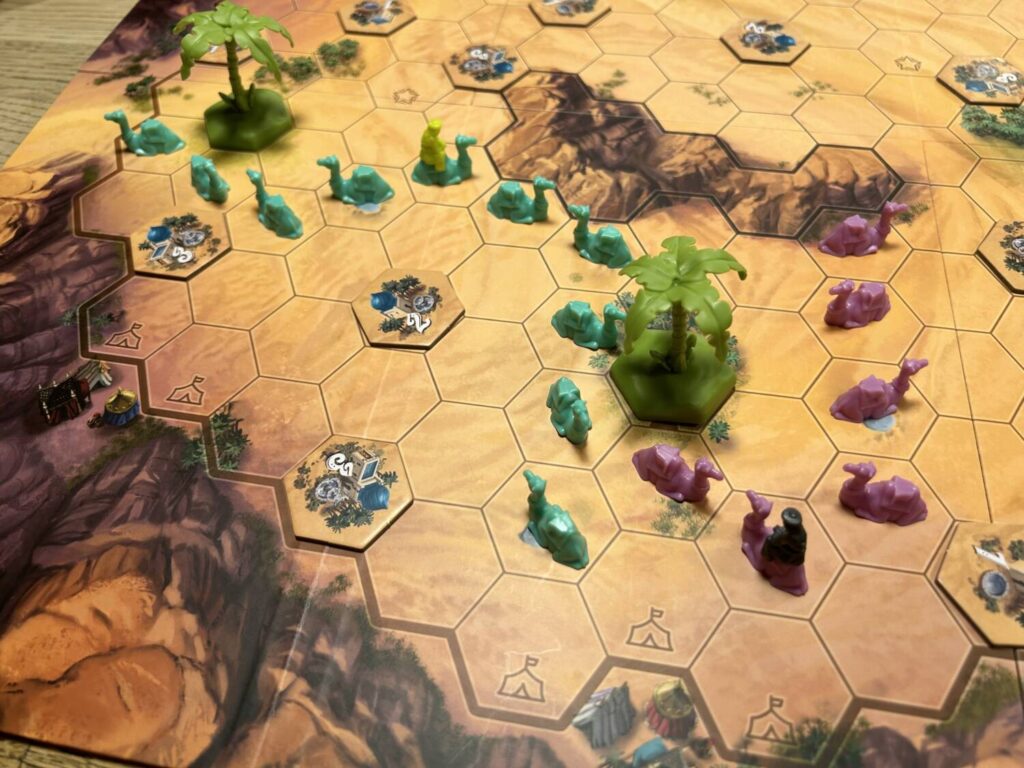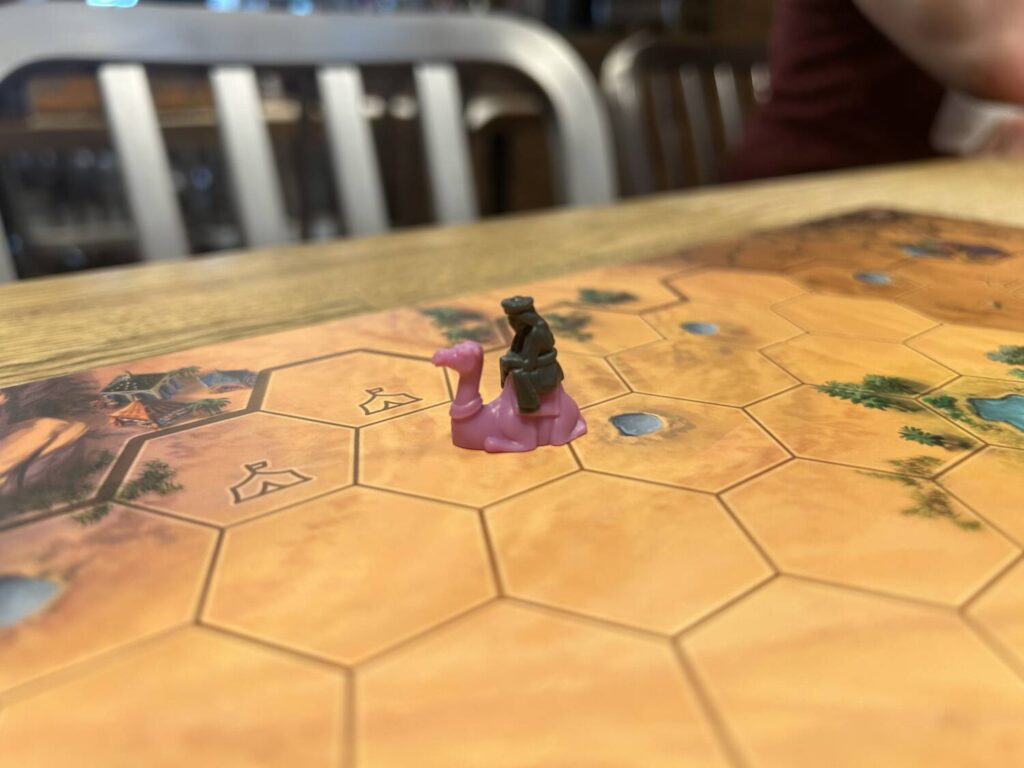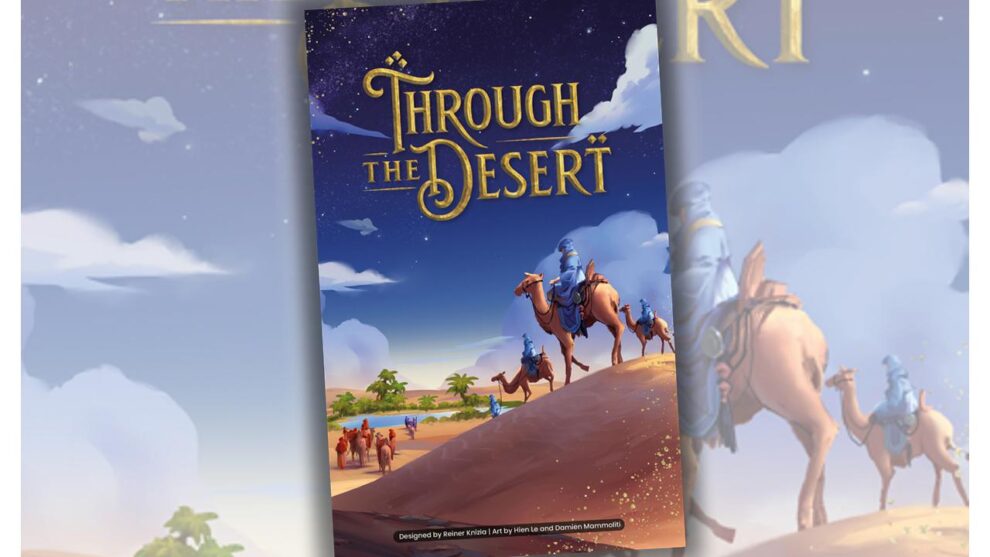Disclosure: Meeple Mountain received a free copy of this product in exchange for an honest, unbiased review. This review is not intended to be an endorsement.
A few weeks ago, a few friends of mine needed a game recommendation. They had about 40-50 minutes to kill. One of them was in the mood for something heavier, or at least something with really satisfying decisions. Another wanted something interactive. The other three wanted something without too many rules. Though I wasn’t playing, I had a requirement too: given that they had 40-50 minutes, it had to be quick to teach.
As luck should have it, the answer was close at hand: Through the Desert, finally back in print after far too long. Full of satisfying trade-offs, deeply interactive, and taking less than five minutes to teach to a table full of comfortable gamers, the second greatest of Reiner Knizia’s tile-laying masterpieces was the cure for what ailed us.
Through the Desert couldn’t be much simpler. First, players take turns adding their Leader camels, one by one, to any valid space on the board. Those placements feel arbitrary the first couple of times you play, but every camel you place for the rest of the game will have to form caravans by branching off of your matching leader. You quickly learn that those five placements are the most impactful decisions you’ll make.

For the bulk of the game, players take turns adding two camels to unoccupied spaces on the board. You can add two camels of the same color, or two camels of two different colors, but by gum you are going to add two camels to that board. The goal, of course, is to acquire points, which is done by placing camels on tiles, connecting to oases, having the longest caravan in any color, and by cordoning off sections of the board.
There’s a final placement restriction, which may help explain why those initial placements can be so important: two caravans of the same color can never touch. An aggressive player—and Through the Desert allows for a whole lot of aggression—is likely to start the game by placing several of their leaders within a hump’s reach of matching leaders, ensuring that every camel placement is a dagger to the heart. As with most of Knizia’s best designs, you can find a remarkable amount of space for self-expression within the seemingly narrow confines of the rules.
Because camels are added à la Noah’s Arc, you have a sense of what everyone else will be able to do not only during their next turn, but across their next several turns. Some people cite that as a point against Through the Desert, but to me that’s part of the beauty. With every move, not only do you know what you are doing, but it’s easy to see what you are not. A good game of Through the Desert constantly forces you to choose between priorities, to decide which position to develop, to abandon certain caravans to the blows of the sun’s anvil. It is tense, it is brutal, it is often funny, and it’s over within 20-25 minutes.

Within about five minutes of the game starting, I knew Through the Desert had been the right choice. The players were laughing and grumbling in equal measure. Nathan, who’d been in the mood for something heavier, looked up with a fire burning behind his eyes. “This is fantastic.” Through the Desert is, indeed, fantastic. I’m incredibly happy that Allplay has brought it back into print, and I hope it stays available for a long time. There are component upgrades and a few expansions available, but I would give them a miss. While wooden camels are, in theory, an improvement, they make it harder to parse the board state. As for the expansions, they’re fine, but Through the Desert doesn’t need more. It’s already a perfect expression of what it wants to be.
It would seem my friends agreed. They finished the game and immediately set it back up to go again.












Add Comment